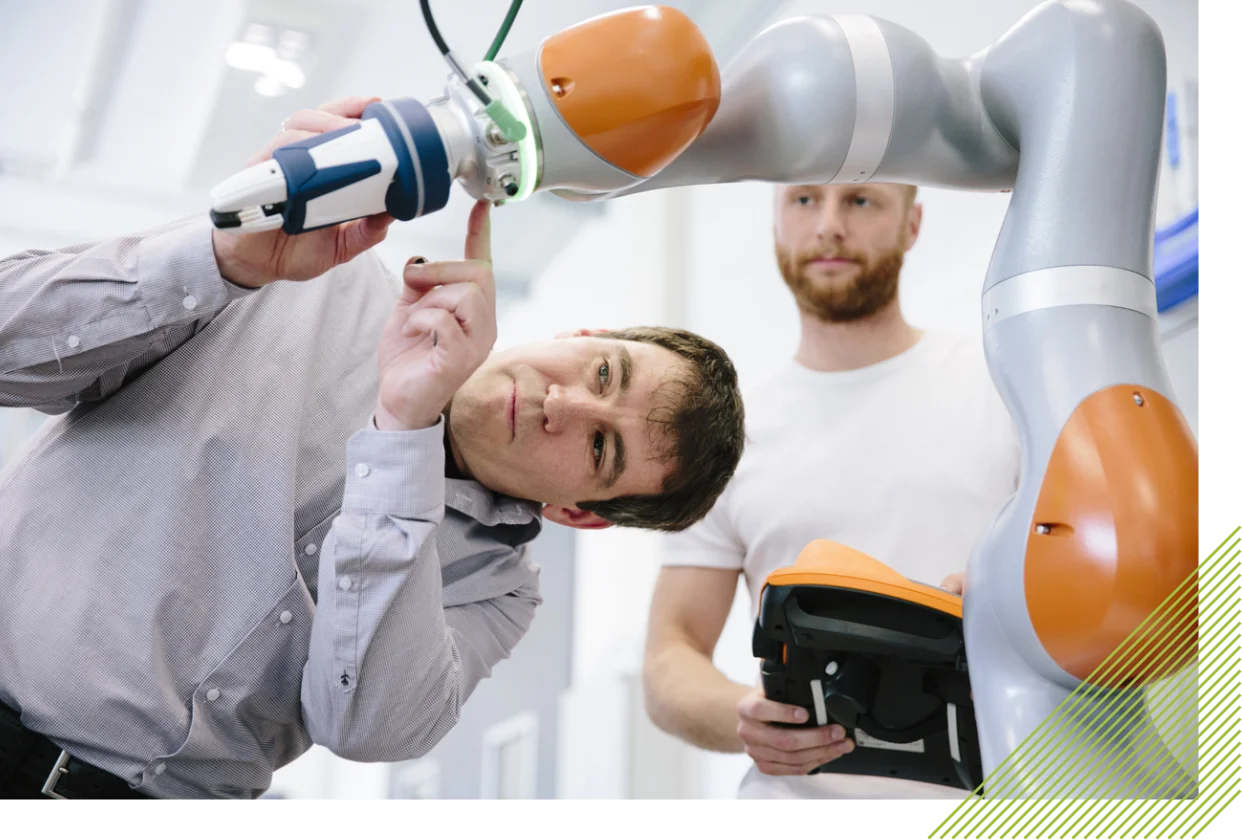Automation through the use of robots:
Cobots and other technology
Industrial automation has radically transformed manufacturing processes, and the use of robots, particularly collaborative robots (cobots), is at the heart of this breakthrough. These robots provide innovative solutions in terms of flexibility, safety and efficiency in a wide range of industrial sectors.
Collaborative robots (cobots)
Cobots are robots designed to work closely with humans in a shared work environment. Unlike traditional industrial robots, which are often confined to cages or dedicated areas for safety reasons, cobots are designed to be safe and interactive, enabling them to coexist with human operators on production lines. Thanks to advanced sensors and technologies, cobots can detect the presence of a human and adjust their movements in real time, guaranteeing maximum safety.
Cobots are used for tasks such as assembly, packaging, materials handling and even welding. Their flexibility is one of their main assets: they can be easily reprogrammed and adapted to different types of task, without requiring complex re-engineering of production lines. This reduces costs and optimizes production times, while increasing productivity.
Industrial robots
In addition to cobots, traditional industrial robots play a crucial role in the automation process, especially for more complex or repetitive tasks. These robots are often used for applications such as welding, painting, materials processing, or component assembly, with high precision and flawless efficiency. They are programmed to perform specific tasks, and can operate at high speeds on high-speed production lines.
Advantages of robot automation
- Increased productivity:
Robots can work non-stop, 24 hours a day, 7 days a week, increasing production volumes without sacrificing quality. - Reduced human error:
By automating repetitive and precise tasks, robots reduce the risk of human error, leading to better product quality. - Increased safety:
Robots, especially cobots, are designed to avoid accidents by detecting human movements and automatically adjusting to prevent collisions. This is particularly important in work environments where physical risks are high. - Flexibility and adaptability:
Cobots, in particular, can be easily reprogrammed to perform new tasks or adapt to varying production volumes. This provides greater flexibility in managing production lines.

Applications in various sectors
- Automotive industry:
Robots are widely used to assemble parts, paint components or carry out quality tests. Cobots complement this work by helping operators with more delicate tasks, or by adjusting production to demand. - Food processing :
Robots are used for tasks such as sorting, packaging and stock management. Cobots, with their ability to work alongside employees, help to increase production rates while maintaining high quality standards. - Electronics :
In electronics manufacturing, robots are essential for assembling printed circuit boards or testing devices. Cobots help to handle fragile or small parts with great precision.
Challenges and future prospects
The adoption of robots and cobots can pose a number of challenges, particularly in terms of initial investment costs, operator training and integration into existing production systems. However, technological advances, particularly in the fields of artificial intelligence (AI) and computer vision, are making robots smarter and more accessible.
In the future, automation with robots and cobots is likely to continue to develop, with increased integration of AI and machine learning capabilities to make robots more autonomous. These technologies will make it possible to predict maintenance requirements, optimize production processes and make production lines more intelligent.
In conclusion, automation through the use of robots, whether industrial robots or cobots, is profoundly transforming modern industry. It offers higher productivity, greater flexibility and improved safety, while paving the way for smarter, more adaptive production.


